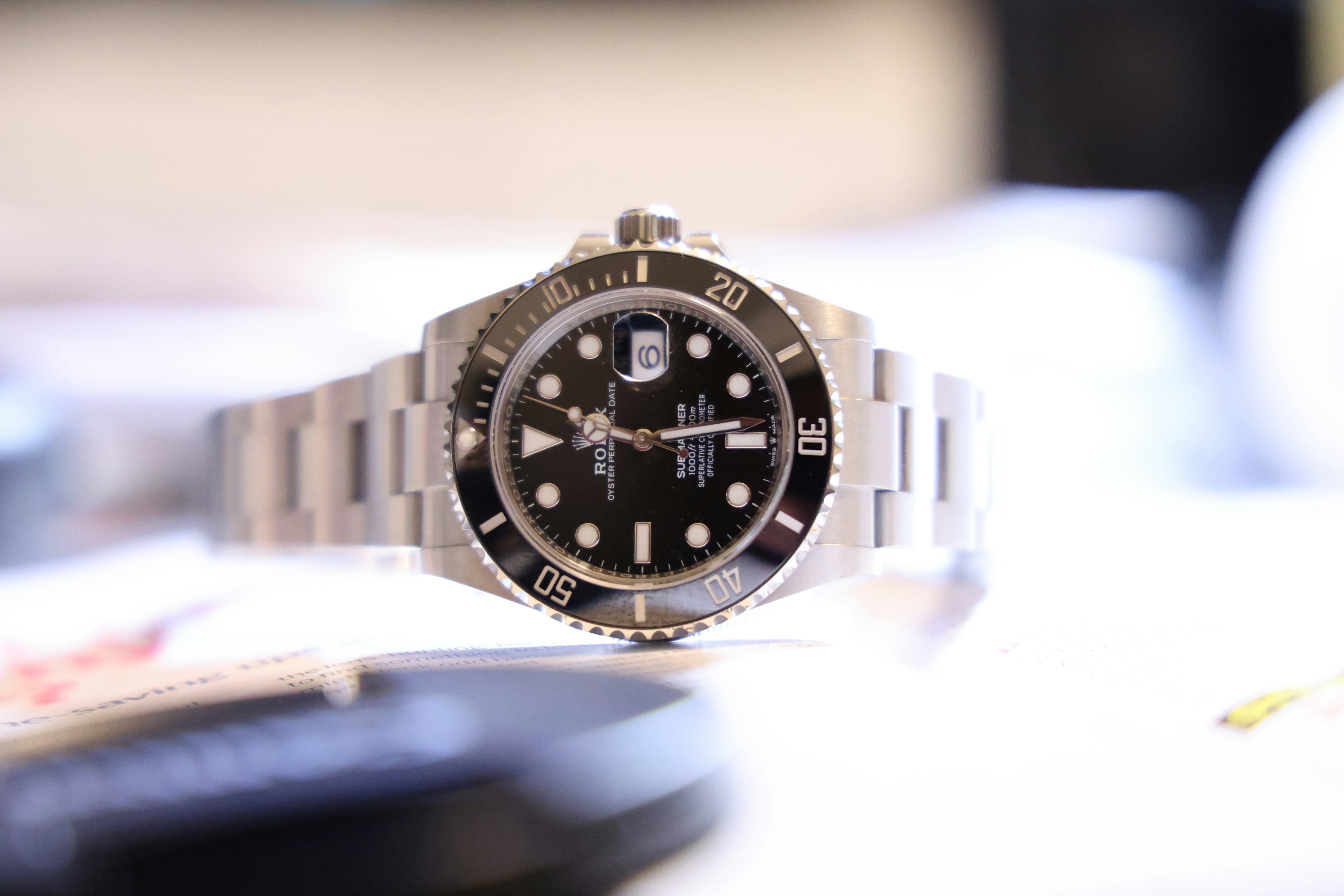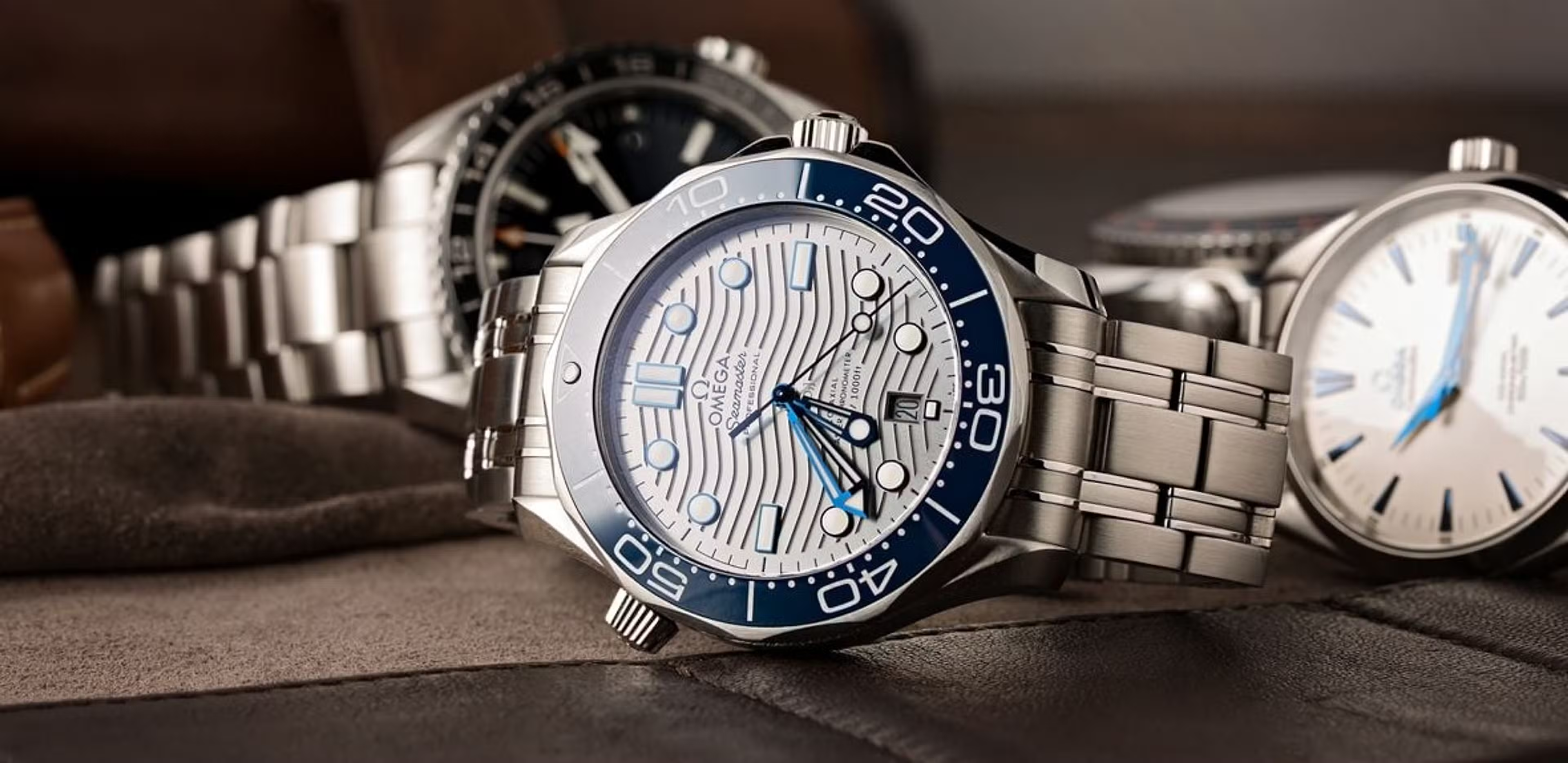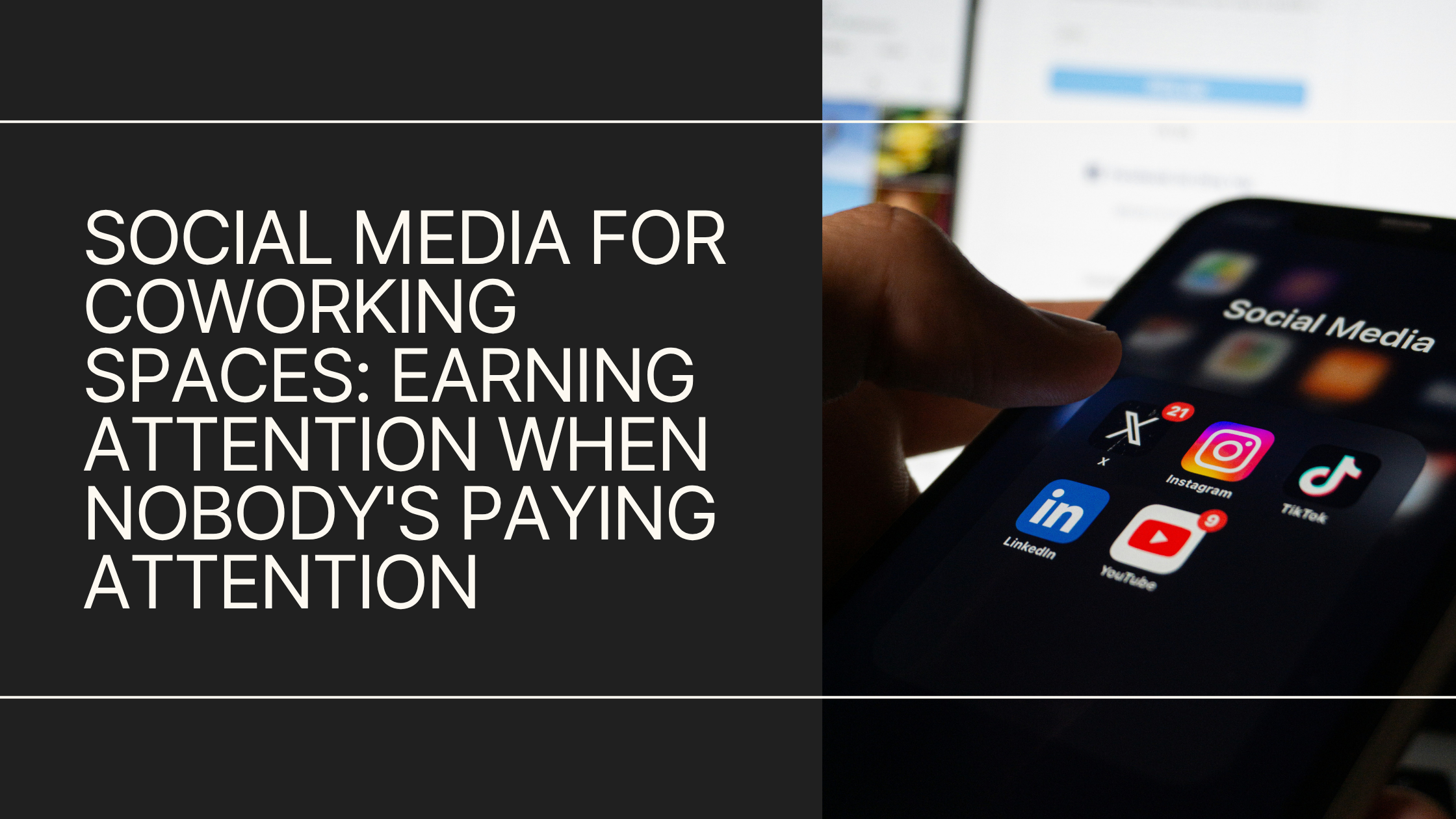
What Rolex, Omega, and coworking have in common
I'm going to share this at the risk of looking like a pretentious [insert word of your choice here]: a case study based on a few of my favourite things.
Let's start here...
I absolutely love watches.
I'm in at least three different Facebook watch groups. I've got online watch friends I’ve known for years but never met in real life.
I regularly wax poetic with them about bracelet tapers, case materials, complications, and bezel actions.
I stare through display casebacks into beautifully-crafted movements for hours like they're crystal balls displaying next week's lotto numbers.
I would (and have) watched a 20-minute video on dial textures on my lunch break.
And then there’s the emotional side.
I love the idea that I can buy this thing—this tactile, beautifully designed, micro-engineered object—wear it every day of my life, and one day pass it down to my kid.
It’s the opposite of disposable. It's something that will carry the stories of my life and pass them along to the next generation (and, as a professional storyteller, this makes me tick—pun fully intended).
TL;DR: I really like watches (I don't blame you if you skipped all of that).
And because I also love marketing, it only felt natural to bring the two together.
This post is part personal passion project, part marketing case study—and it starts with a question I posed in one of the nerdy Facebook watch groups I'm in:
"Help me understand the Rolex vs Omega debate. What makes one better than the other?"
For the 99.87% of people who don't give a you-know-what about watches, here's some context to make this meaningful...
The Omega Seamaster vs. the Rolex Submariner are both icons, both reliable, both chronometer certified, both objectively excellent watches.
In most ways, these watches are arguably quite similar. There isn't much between them.
They're relatively similar in price. From a technical standpoint, they're virtually neck and neck.
So, what separates them?
I got over 80 responses to that post I mentioned. At least half of them alluded to one thing: marketing.
And you know what? That tracks.
In this instance, I’m talking about marketing in terms of creating emotional connections between people and products or services.
Both the Submariner and Seamaster are excellent. But the divide between the brands—and the strength of opinion people have—is fascinating.
These inanimate objects are deeply polarizing (among people who care).
So, I wanted to break it down a bit—and, yes, I will share a marketing insight for coworking spaces at the end of this.
Trust the process.
Numbers, Scarcity, and Signal Value

Before we get into the emotional stuff, let’s ground this in a few basics.
The Rolex Submariner and the Omega Seamaster are, on the surface, very similar watches, but the market treats them very differently.
Here's a quick pulse check on how that plays out:
- Waitlists: The Submariner is notoriously hard to get at retail; the Seamaster, not so much. Want a black Sub? Better know someone and have a year to wait.
- Sales: Rolex outsells Omega significantly—roughly double the revenue, according to Swatch Group reports.
- Resale Value: Submariners often resell above MSRP. Seamasters lose 30% of their value when you walk out of the store with them.
- Exclusivity: Rolex has been speculated to intentionally restrict supply. This is hotly contested among nerds. But, either way, Omega certainly doesn’t. You can add a Seamaster to cart today. Not so with Rolex.
- Specs: Modern Seamasters arguably outperform Submariners on paper. They have the more anti-magnetic movements (resistant to higher gauss, if you’re into nerdy lingo), METAS certification, 300m water resistance, exhibition casebacks, ceramic bezels, coaxial escapements—the list goes on.
The specs are cool—but they’re not the main purchase driver (not necessarily).
Most people don’t fall in love with a watch because of its water resistance rating or the number of gauss it can withstand (though some do—don't @ me, watch nerds).
They choose what resonates with them emotionally, then reach for the specs to help justify it.
People are generally team Rolex or team Omega, and they use the above to validate their opinion.
The truth is they like what they like for their own reasons.
Digging further into my dorky Facebook group responses, the truth behind the debate emerges:
The biggest differentiator is how the watch makes you feel.
Just look at these quotes...
“For me it is Omega, love the style love the story and that hesalite and Coaxial movement hands down for me head and shoulders above the Rolex.”
“I’m somewhat guilty of being a Rolex snob. I never gave Omega the time of day or the respect they deserved.”
“If you were to ask me to quantify why I like my Omega better than Rolex I would not be able to. I feel it… the first luxury watch I ever saw and liked was an Omega, and it just stays with me to this day in that deeply held emotional connection.”
That emotional connection is gold from a marketing standpoint.
So, let's talk about how each brand got there.
Rolex: The Masterclass in Brand Exclusivity

Rolex has been telling emotionally resonant stories since the 1920s. Think Mercedes Gleitze swimming the English Channel with an Oyster around her neck—then Rolex taking out a full-page newspaper ad the next day.
That's not just product placement. It's myth-building.
Hans Wilsdorf, the brand’s founder, wasn’t just focused on building great watches—he obsessed over perception.
He picked the name “Rolex” because it was short, looked good on a dial, and could be pronounced in any language.
That’s the kind of brand-building instinct most modern marketers would kill for.
That tradition continues:
- Sir Edmund Hillary and Tenzing Norgay’s 1953 Everest summit featured a Rolex Explorer (though there's debate on whether they wore it or a Smiths. As the story goes, there was one of each worn at the top of the world—it doesn't matter, Rolex claimed the story).
- Sponsorships in tennis, golf, sailing, and Formula 1 align Rolex with precision and excellence.
- The brand also famously partnered with James Cameron for his 2012 solo descent to the bottom of the Mariana Trench (the deepest point on earth), echoing its 1960 Deep Sea Special experiment that attached a Rolex to the outside of the Trieste submersible and brought it back up in perfect working condition.
- Their tagline—"A crown for every achievement"—cements Rolex as a reward for success, not just a watch.
- The Day-Date—dubbed the 'Presidential' watch—earned its nickname after being worn by several U.S. presidents, including Lyndon B. Johnson, and became a symbol of influence and authority without Rolex ever needing to spell it out.
And they back that up with limited availability.
Again, whether it’s intentional or not is up for debate, but regardless, you can't just walk into a store and buy a Submariner. That scarcity fuels desire.
The brand doesn’t market features. It markets status, prestige, and personal accomplishment.
Omega: Legacy, Innovation, and Accessibility

Omega’s marketing tells a different kind of story—one of technical mastery and cultural relevance:
- The Speedmaster was the first watch to be worn on the moon in 1969 and remains the only NASA-certified watch for spacewalks.
- The Speedy was also credited with saving the Apollo 13 mission—when the spacecraft lost most of its instruments, the crew relied on their Omega mechanical chronographs to time a critical engine burn that helped get them home.
- Omega has been the official timekeeper of the Olympics since 1932—and they even created the signature Olympic bell tone used to start many events. That little sound cue? That’s brand association at a visceral level.
- They locked down James Bond as a Seamaster watch wearer in 1995 and have been part of the franchise ever since (ironically, Ian Fleming famously wore a Rolex Explorer while writing the James Bond Books, and the Connery-era Bond could be seen rocking a Submariner). What’s clever is how Omega has evolved with each Bond actor—from Brosnan’s polish to Craig’s grit—customizing the watch to suit the character’s tone while keeping the Seamaster central to the identity.
- The MoonSwatch collaboration with Swatch created retail chaos and made the brand relevant to a new generation.
Omega doesn’t do scarcity. You can buy most models online right now. But that’s part of the trade-off: you’re buying access to a legacy of innovation and functionality, not exclusivity.
So, What’s the Emotional Pull?
It’s not about who wins. It’s about what connects. And it comes down to a battle between two behemoth brands.
Here’s what I mean.
Rolex isn’t about what you can buy—it’s about what you’ve earned. It taps into accomplishment, scarcity, and signal value. You don’t just wear a Rolex. You deserve it.
Omega, for all its innovation and cultural relevance, plays a different tune. It’s about technical credibility, legacy, and story. The Speedmaster didn’t just go to the moon—it got a crew home safely. That’s substance over flash.
In my humble opinion, we only compare the specs once we've already decided which watch we like better.
What matters here is that both brands understand their buyer.
Among watch lovers, some people want their watch to say, "I’ve made it."
Others want their watch to say, "I don't care about flash. I care about function."
For watch nerds, your watch is a reflection of your values—a signal to others about how you live your life.
And each brand taps into those.
Now, let's cut watches out of the picture and get to the real marketing lesson here:
Your brand doesn’t need to be for everyone. It needs to speak clearly—and consistently—to the people it’s meant for.
The best marketing doesn’t aim for the middle. It hits the nerve.
Final Take: Emotion > Features
The watch market proves something marketers already know deep down:
We buy with emotion, and justify with logic.
Specs matter. But they only matter after we’ve made an emotional connection.
Whether you’re Rolex or Omega, the win comes from aligning your brand with what your audience values most—whether that’s prestige, precision, legacy, or identity.
Because at the end of the day, people choose the option that feels right.
What This Means for Coworking Spaces
This isn’t just a lesson for luxury brands—it’s a reminder that great marketing starts with knowing your audience.
Plenty of coworking spaces operate at a similar price point. Many offer great amenities, high-tier design, high-touch service, fast Wi-Fi, and a strong community.
But when a potential member is deciding where to work, they’re not just comparing specs.
They’re asking: which space feels right for me?
That’s where this whole Rolex vs. Omega concept comes into play.
These are two watch brands that, on paper, are pretty similar. But they’re speaking to different types of buyers.
Rolex leans into aspiration, exclusivity, and emotional reward. Omega leans into precision, credibility, and legacy.
Both approaches work, but only because each brand knows exactly who they’re talking to.
The same applies to coworking.
Are you attracting early-stage founders who want to feel scrappy and connected? Or mid-career professionals who want polish and prestige? Are your members driven by convenience and function—or a sense of belonging and identity?
You don’t need a waitlist to be compelling. And you don’t need to rattle off every amenity you offer to sell people.
What you do need is clarity about who your audience is, what they care about, and how your brand—and the experience of working in your space—makes them feel.
Tell the stories that matter to them. That’s what creates emotional connection.
People don’t just rent offices, desks, walls, and chairs. They invest in a place that makes them feel something.
Market accordingly.
I’ll be back with more thoughts soon—especially if I can find an excuse to write about Grand Seiko.
Want more insights like these delivered directly to your inbox? Subscribe for our newsletter today. We send weekly bite-sized content marketing insights to help you create a member magnet for your coworking space.
Or, if you have questions about how to put content marketing to work for your coworking business, book a free consultation today.

%20featured%20(1).png)

